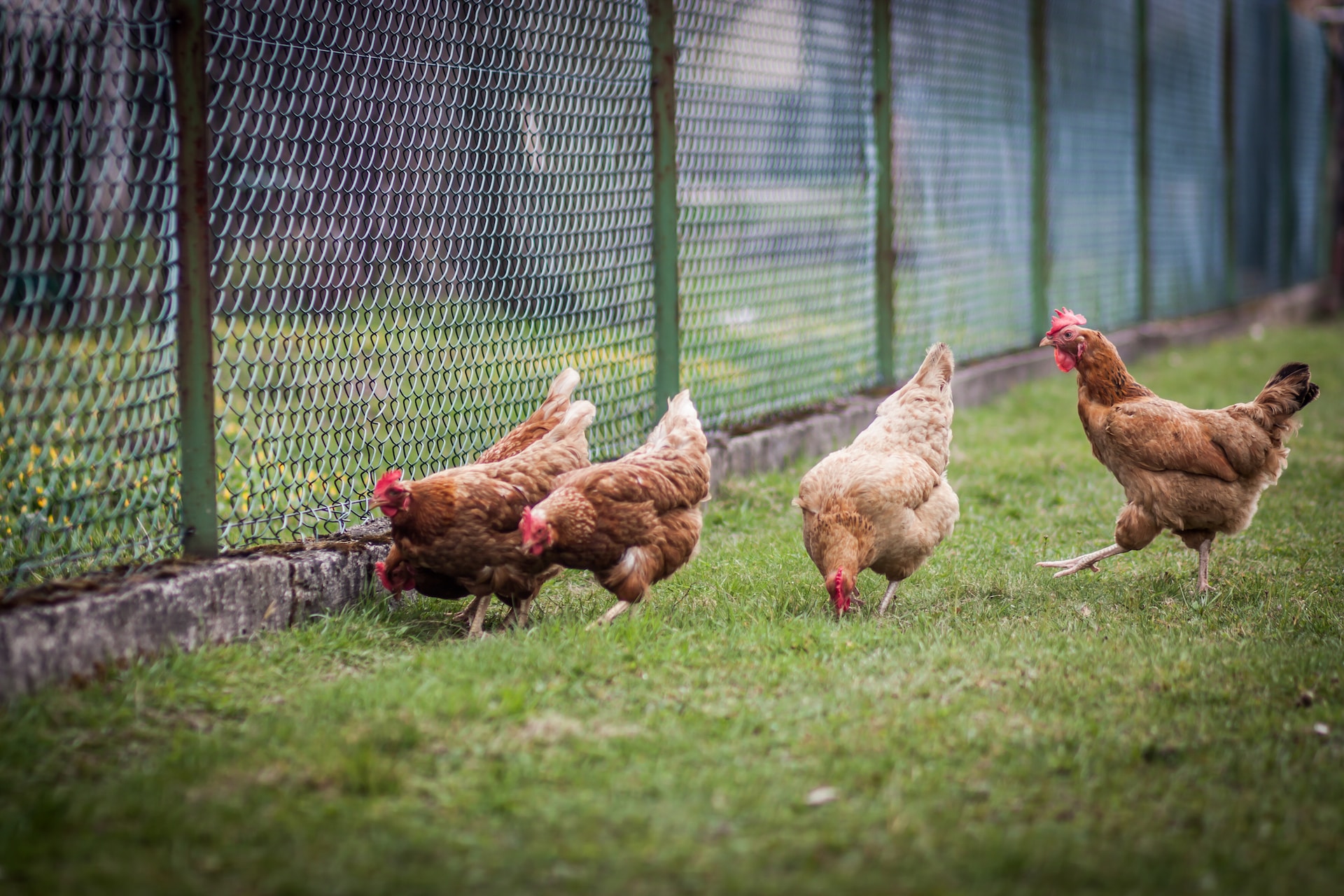
5 Things to Consider Before Raising Urban Chickens
We are reader-supported. When you buy through links on our site, we may earn affiliate commission.
Many people think keeping chickens is purely a rural activity, something you can only do if you live on a big farm. That couldn’t be further from the truth! Raising urban chickens has become increasingly popular in crescent years, and it’s little reason why. Chickens are hardy, make delightful pets, and supply you with a source of fresh food. Here’s what to consider if you’re thinking about raising poultry.
1. City Ordinances
Before you build a coop — or bring home a box of baby chicks from Tractor Supply after giving in to their siren song of adorable chirping — find out if raising poultry is legal where you live. Some cities regulate the number of birds you can have, while others ban chicken keeping altogether. Some have no laws against raising chickens at all.
Still other municipalities impose bans only on roosters. For the sake of your neighbors, you probably shouldn’t keep male chickens, anyway. It’s a myth that roosters crow only in the morning. Instead, they cock-a-doodle-doo all day long, testing the sanity of anyone living nearby.
Roosters and hens, alike, have special adaptations that keep their eardrums from rupturing when a rooster crows at an average of 130 decibels — but your neighbors don’t. That brings us to the next topic:
2. Neighbors
Even if the city is OK with you keeping urban chickens, it’s a good idea to let your neighbors know about your plan. You can reassure them that you won’t be keeping roosters or letting your backyard get smelly.
If you plan to raise meat birds, it’s considerate not to butcher them in view of your neighbors. Be as polite as possible and always keep your coop clean, pest-free and not overrun with chickens.
Do your neighbors still have misgivings? Try reminding them that you’ll have plenty of free, fresh eggs when your hens start laying! Who could say no to that?
3. Space Requirements
Chickens must live in a minimum flock size of three birds. They’re very social animals, so they love having plenty of friends around for companionship and to cuddle up with at night. Your coop, which is where your chickens will sleep, and the run, which is their space to wander around during the daytime, must be big enough to accommodate three or more birds.
Aim to give your chickens at least eight square feet of coop space per bird. They won’t spend much time in the coop — just when they’re sleeping and laying eggs — but it needs to be comfortable. To create a big enough run, fence off an area of at least 16 square feet of space per bird.
4. Predator Proofing
When you think of predators, what comes to mind? Many people picture bears, coyotes or mountain lions. If you’re a chicken, however, your biggest threats to survival are usually small, nocturnal predators like raccoons, skunks, foxes and opossums. Raccoons, in particular, are experts at opening containers and squeezing their way into small spaces.
Predator-proofing your coop is necessary even if you live in a dense city center. The best coop designs have solid walls or, at least, a solid-walled roost area where your birds can sleep. If you have a wire coop, use hardware cloth — a type of metal mesh with extremely small holes — to cover the top and sides. Some people also bury a layer of hardware cloth under the coop to prevent animals from digging in.
5. Chicken Breeds
The best breeds for urban chicken keeping share a few characteristics:
Moderate Flight Ability
Contrary to popular belief, almost all chicken breeds can fly.
The bantam breeds, which are miniaturized versions of standard breeds, can fly really well. They love to play keep-away by flying into trees just out of reach of your tallest ladder. Their small size might fool you into thinking they’d be great urban chickens, but they really are best for people who free range their flock. Alternatively, bantams can live in a totally enclosed backyard space with netting overhead, or you can clip their primary wing feathers every few weeks.
Fluffy, adorable silkies are unique in that they can’t fly at all. However, that’s because they lack the adult feathers that also keep them warm and dry. Silkies do very well in confinement, but they are a real challenge to keep alive if it gets even remotely cold or wet. They cannot fly to a roost at night and are more susceptible to predation than flighted breeds. Other chicken breeds will pick on them mercilessly.
The best urban chickens are not totally flightless, but they also won’t fly over your fence. Calm, robust breeds that are both too chunky to fly and too calm to startle easily are the best choices.
A Calm Nature
Some chicken breeds, like Andalusians and white leghorns, are infamous for their nervous energy. They typically do best in large spaces where they can roam freely during the daytime. For a better idea of which chickens do poorly in confinement, look up “flighty chicken breeds.”
Calm, sweet-tempered chickens, which tend to be larger breeds, usually tolerate living in a fenced area.
Quietness
You already know that hens are better for urban chicken keeping than roosters. However, even girls can be noisy! Flighty breeds are, in general, more prone to noise-making than laid-back birds.
Breeds that lay a lot of eggs will also end up singing their egg song — the loud, raucous clucking sound that a hen makes after laying an egg — a lot more frequently than chickens that weren’t bred for egg production. The good news is that the egg song typically only lasts a few minutes, and hens don’t lay every day.
Although this is by no means an exhaustive list, Rhode Island Reds, Orpingtons, Jersey Giants, Sapphire Gems and Australorps are great breeds for urban chicken keeping. They’re robust, relatively quiet and tolerate confinement well. Many individuals from these breeds also tame easily if you handle them frequently as chicks.
Starting Your Urban Chicken Keeping Journey
You don’t need acreage to start raising chickens. Urban chicken keeping has become a popular pastime, and with a little research and hard work, you can do it, too. You’ll be enjoying fresh eggs in no time.
Share on
Like what you read? Join other Environment.co readers!
Get the latest updates on our planet by subscribing to the Environment.co newsletter!
About the author
Jane Marsh
Starting from an early age, Jane Marsh loved all animals and became a budding environmentalist. Now, Jane works as the Editor-in-Chief of Environment.co where she covers topics related to climate policy, renewable energy, the food industry, and more.





